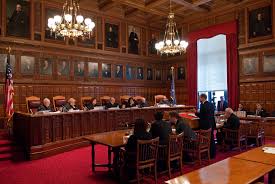
BG Checo International Ltd. v. British Columbia Hydro and Power Authority,[1993] 1 SCR 12
This case was considered by the Supreme Court in 1993. It involved claims which could equally be found in contract and tort. Hydro tendered certain work and BG Checo was the low bidder. Hydro knew all along that the clearing of the hydro easement had been inadequately undertaken by another company. This information was concealed and would result in a cost overrun by Checo. The Court concluded that this omission constituted a negligent misrepresentation and awarded damages to Checo.
The Court, in deference to the plight of the plaintiff and recognizing that the Courts are to conduct themselves efficiently considering their limited resources, offered a strategy to the plaintiff:
- Sue in Contract and sue in tort,
- Select the highest financial compensation available,
- Make that selection at the end of the trial.
So, the plaintiff now was obligated to sue everybody at once in one lawsuit. This was no longer a two step process with long drawn out litigation. Bring all the lawsuits together. Bring all the parties together in one action. There was no penalty that would affect the plaintiff. However, if you should have sued in tort and you only sued in contract, you would later be prevented from suing the same parties again in tort.
To some extent, that has opened the floodgates. Lawyers acting for plaintiffs who fail to sue everybody and for all the claims potentially available will be negligent.
Consider the case of a buyer who unwittingly acquires the property with the faulty basement. The lawyer acting for the buyer is now going to consider recommending that the following be sued:
• The seller
• The seller’s sales representative
• The seller’s agent (the brokerage)
• The buyer’s own sales representative
• The buyer’s own agent (the brokerage)
• The home inspector
• The home inspection company
• The builder
• The foundation contractor
• The consulting engineer
• The consulting engineering company
• The building inspector
• The municipality
From the perspective of the buyer, there is a contractual claim against:
• The seller
• The buyer’s own sales representative
• The buyer’s own agent (the brokerage)
• The home inspector
• The home inspection company
For everyone else, the potential claims are all based in tort law, where, in large measure there is “no paperwork” and there are no “disclaimers.
Brian Madigan LL.B., Broker
